
Charleston Area Beaches: The Coastal Gems of South Carolina
Discover Charleston Area Beaches: From family-friendly shores to surfing hotspots, experience the best of South Carolina's coastal charm and natural beauty.
Charleston Area Beaches in South Carolina are the perfect seaside escape for tourists seeking sun, sand, and Southern charm. With an array of beaches to choose from, each offers a unique experience, blending natural beauty, historical significance, and modern amenities. From the family-friendly shores of Isle of Palms to the laid-back vibe of Folly Beach, there's something for everyone. Folly Beach is known as the 'Edge of America.' It's a hotspot for surfers and those looking to relax by the sea. The vibrant local culture, along with its array of restaurants and shops, makes it a must-visit. Don't miss the Morris Island Lighthouse, an iconic symbol standing proudly off the coast. Isle of Palms offers pristine beaches and is perfect for families. The Isle of Palms County Park provides amenities like picnic areas and playgrounds, ideal for a day out with kids. For a bit of luxury, Wild Dunes Resort offers golf courses, tennis courts, and spa services. Sullivan's Island is a quieter option, known for its historic charm and natural beauty. Visit Fort Moultrie, a historical site that played a role in the Revolutionary War. Sullivan's Island is also a great spot for kiteboarding and windsurfing, thanks to its favorable wind conditions. No visit to Charleston Area Beaches is complete without sampling the local seafood. Fresh shrimp, oysters, and fish are staples in coastal South Carolina cuisine. Many beachfront restaurants offer the catch of the day, providing a true taste of the region.
Local tips in Charleston Area Beaches
- Visit in the spring or fall to avoid summer crowds and enjoy milder weather.
- Pack sunscreen and insect repellent, especially if you plan to explore the marshes.
- Check local surf reports if you're planning to surf or kiteboard.
- Explore local seafood joints for a taste of the region's freshest catches.
- Take a guided tour to learn about the area's rich history and natural environment.
Charleston Area Beaches: The Coastal Gems of South Carolina
Charleston Area Beaches in South Carolina are the perfect seaside escape for tourists seeking sun, sand, and Southern charm. With an array of beaches to choose from, each offers a unique experience, blending natural beauty, historical significance, and modern amenities. From the family-friendly shores of Isle of Palms to the laid-back vibe of Folly Beach, there's something for everyone. Folly Beach is known as the 'Edge of America.' It's a hotspot for surfers and those looking to relax by the sea. The vibrant local culture, along with its array of restaurants and shops, makes it a must-visit. Don't miss the Morris Island Lighthouse, an iconic symbol standing proudly off the coast. Isle of Palms offers pristine beaches and is perfect for families. The Isle of Palms County Park provides amenities like picnic areas and playgrounds, ideal for a day out with kids. For a bit of luxury, Wild Dunes Resort offers golf courses, tennis courts, and spa services. Sullivan's Island is a quieter option, known for its historic charm and natural beauty. Visit Fort Moultrie, a historical site that played a role in the Revolutionary War. Sullivan's Island is also a great spot for kiteboarding and windsurfing, thanks to its favorable wind conditions. No visit to Charleston Area Beaches is complete without sampling the local seafood. Fresh shrimp, oysters, and fish are staples in coastal South Carolina cuisine. Many beachfront restaurants offer the catch of the day, providing a true taste of the region.
When is the best time to go to Charleston Area Beaches?
Iconic landmarks you can’t miss
Joe Riley Waterfront Park
Discover the serene beauty of Joe Riley Waterfront Park, a lush oasis in Charleston perfect for relaxation, family fun, and stunning waterfront views.

South Carolina Aquarium
Explore the South Carolina Aquarium, a captivating marine adventure in Charleston that showcases local ecosystems and promotes conservation efforts.

Isle of Palms County Park
Discover the beauty of Isle of Palms County Park, a coastal paradise with sandy beaches, lush greenery, and perfect picnic spots for your getaway.

Sullivan's Island Beach
Discover the serene beauty of Sullivan's Island Beach, a hidden coastal treasure near Charleston, SC, perfect for relaxation and adventure.

Charles Towne Landing State Historic Site
Explore the birthplace of South Carolina at Charles Towne Landing State Historic Site, where history and nature intertwine for a memorable experience.

Unitarian Church in Charleston
Explore the Unitarian Church in Charleston, a historical landmark blending stunning Gothic architecture and spiritual inclusivity in the heart of the city.

Stories in the Cemetery
Discover Charleston's haunted history with captivating tales from Stories in the Cemetery, where history and mystery intertwine in enchanting graveyards.
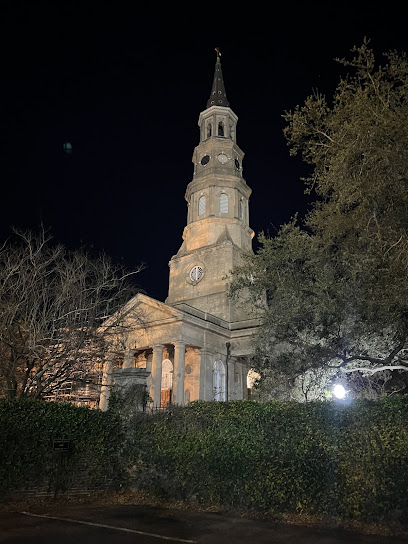
United States Custom House
Explore the United States Custom House, a neoclassical landmark in Charleston that showcases the city's rich maritime history and stunning architecture.

Unmissable attractions to see
Charleston Outdoor Adventures
Discover the breathtaking beauty of Charleston's waterways with outdoor adventures in kayaking, fishing, and wildlife exploration.

Rainbow Row
Discover the colorful charm and rich history of Rainbow Row, a vibrant collection of historic homes in Charleston, South Carolina.

Pineapple Fountain
Experience the charm of Charleston at the Pineapple Fountain, a symbol of hospitality nestled in the beautiful Waterfront Park, offering stunning views and a serene atmosphere.

Charleston Harbor Tours
Experience the breathtaking beauty of Charleston from the water with Charleston Harbor Tours, offering unforgettable sightseeing cruises and sunset excursions.

Folly Beach County Park
Explore the natural beauty of Folly Beach County Park, a serene coastal escape perfect for sunbathing, wildlife watching, and family fun.

James Island County Park
Explore the serene beauty and recreational offerings of James Island County Park, a tranquil escape in Charleston, South Carolina.

Sullivan's Island Beach
Explore Sullivan's Island Beach: A tranquil escape with golden sands, rich history, and stunning ocean views perfect for all travelers.

Sandlapper Water Tours
Explore the stunning waterways of Charleston with Sandlapper Water Tours for an unforgettable adventure filled with history and natural beauty.

Fort Sumter Visitor Education Center
Explore Fort Sumter Visitor Education Center for a deep dive into Civil War history, interactive exhibits, and breathtaking views of Charleston Harbor.

Children's Museum of the Lowcountry
Discover endless fun and creativity at the Children's Museum of the Lowcountry, where learning meets play in Charleston.

Sullivan's Island Lighthouse
Explore the stunning Sullivan's Island Lighthouse, a historic beacon offering breathtaking ocean views and a glimpse into South Carolina's maritime heritage.

Charles Towne Landing State Historic Site
Explore the birthplace of Charleston at Charles Towne Landing State Historic Site, where history and nature intertwine for an unforgettable experience.

The Museum at Market Hall
Discover Charleston's rich history and culture at The Museum at Market Hall, featuring captivating exhibits and local art in a historic setting.

Pirates of Charleston
Experience the thrill of pirate adventures at Pirates of Charleston – a family-friendly attraction filled with treasure hunts and live performances.
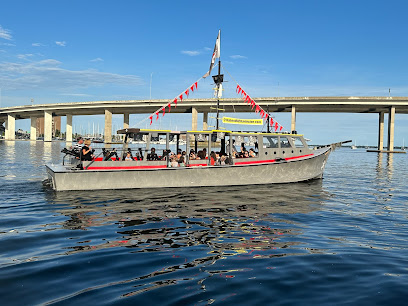
Joseph Manigault House
Discover the elegance of the Joseph Manigault House, a historical museum in Charleston, SC, showcasing antebellum architecture and rich Southern heritage.
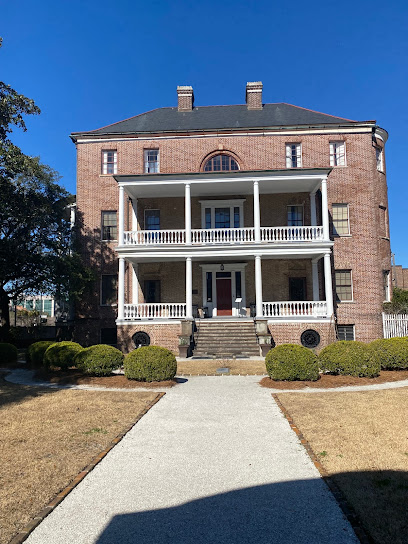
Essential places to dine
Hyman's Seafood
Discover the essence of Charleston dining at Hyman's Seafood – where fresh flavors meet Southern hospitality in every dish.

Page's Okra Grill
Discover the flavors of Southern cuisine at Page's Okra Grill – where every meal is a celebration of American tradition and hospitality.

Fleet Landing Restaurant & Bar
Experience Charleston's vibrant seafood culture at Fleet Landing Restaurant & Bar with stunning waterfront views and delicious Southern cuisine.

Lewis Barbecue Charleston
Experience authentic Southern barbecue at Lewis Barbecue in Charleston – where smoky flavors meet vibrant local culture.
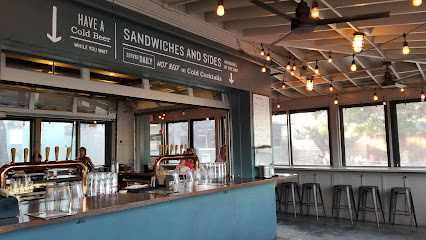
California Dreaming
Discover California Dreaming in Charleston: An American culinary haven offering delicious seafood and family-friendly dining experiences.

Poogan's Porch
Experience authentic Southern cuisine at Poogan's Porch in Charleston—where traditional flavors meet modern charm.

Magnolias
Experience Southern hospitality at its finest with exquisite seafood and gourmet cuisine at Magnolias in Charleston.

Husk
Experience Southern culinary artistry at Husk, where local ingredients meet innovative American cuisine in Charleston's vibrant dining scene.

82 Queen
Experience exquisite Southern cuisine at 82 Queen in Charleston—where tradition meets innovation in every delicious bite.

167 Raw Oyster Bar
Discover Charleston's culinary gem at 167 Raw Oyster Bar – savor fresh oysters and exquisite seafood dishes in a lively atmosphere.
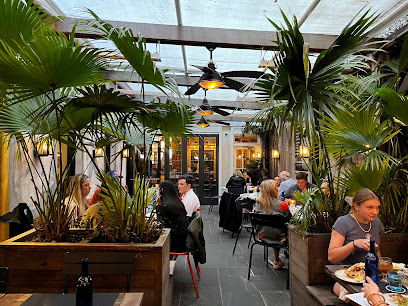
Leon's
Experience the best of Charleston's seafood at Leon's Oyster Shop - fresh oysters and Southern flavors await you!

Bowens Island Restaurant
Discover fresh Lowcountry seafood in a picturesque setting at Bowens Island Restaurant near Charleston.

High Cotton Charleston Restaurant
Experience Southern hospitality at its finest at High Cotton Charleston, where exquisite seafood meets elegant dining in a historic setting.

Slightly North of Broad Restaurant
Experience the best of Southern cuisine at Slightly North of Broad in Charleston's historic French Quarter.

Millers All Day
Experience authentic Southern breakfasts at Millers All Day in Charleston – where tradition meets innovation on every plate.

Markets, malls and hidden boutiques
The Shops at The Charleston Place
Explore the charm and elegance of The Shops at The Charleston Place, a premier shopping destination in historic Charleston, SC.

Treasure Island
Discover stylish beachwear and accessories at Treasure Island in Charleston, where your seaside fashion adventure begins.

Savannah Bee Company
Explore the delightful world of honey and bee-inspired gifts at Savannah Bee Company, a unique shopping destination in Charleston.
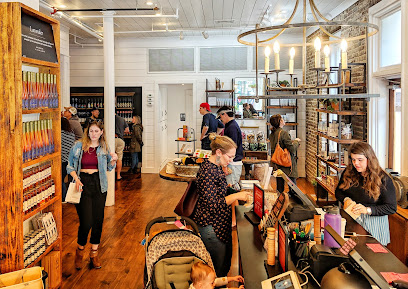
Savannah's Candy Kitchen
Explore the delightful world of handmade sweets at Savannah's Candy Kitchen, a must-visit candy store in Charleston, SC.

Grit & Grace Studio
Explore unique local art and handcrafted goods at Grit & Grace Studio, a boutique treasure in the heart of Charleston, South Carolina.

Black Octopus Mercantile LLC
Explore Black Octopus Mercantile LLC in North Charleston for unique gifts, local art, and surf-inspired treasures that capture the essence of your travels.

Carolina Girls Personalized Jewelry & Gifts
Uncover personalized jewelry and unique gifts at Carolina Girls, a delightful gift shop in Charleston's West Ashley, embodying Southern charm and creativity.

Tervis
Explore Tervis in Charleston's French Quarter for unique, customizable drinkware and charming Southern-inspired gifts that capture the Lowcountry spirit.

The Tiny Tassel
Discover unique jewelry, trendy clothing, and whimsical gifts at The Tiny Tassel, a must-visit boutique in Charleston's vibrant Cannonborough Elliotborough neighborhood.
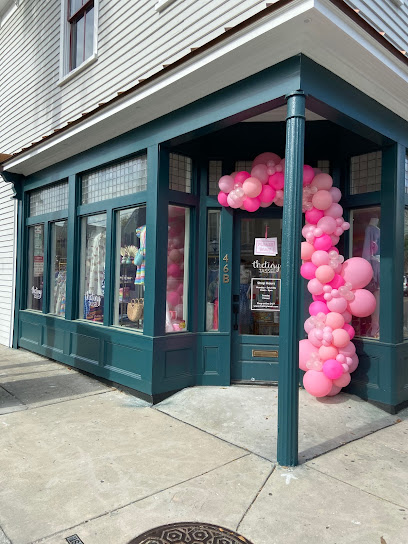
Hampden
Explore Hampden, Charleston's premier women's clothing store, offering unique fashion and accessories in a charming boutique atmosphere.

The Hidden Countship: Italian Boutique for Fine Living
Explore The Hidden Countship, Charleston’s premier boutique for exquisite Italian fashion, jewelry, and unique gifts that capture the essence of fine living.

Two Cumberland
Discover Two Cumberland, Charleston's premier women's boutique offering unique fashion and local gifts in a charming setting.

Noddy Charleston
Discover unique gifts and home goods at Noddy Charleston, where local charm meets thoughtful craftsmanship in the heart of South Carolina.

Shirt Off My Back
Shop unique Charleston-inspired apparel at Shirt Off My Back, where local culture meets fashion in a charming boutique setting.

Best Gift Idea Ever
Explore a treasure trove of unique gifts, art, and custom creations at Best Gift Idea Ever in Charleston's vibrant French Quarter.
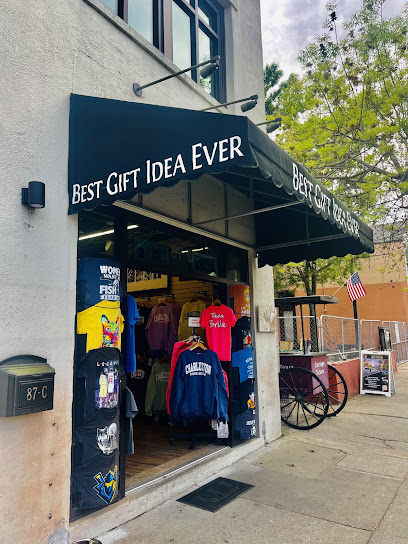
Essential bars & hidden hideouts
The Tattooed Moose
Discover the vibrant American comfort food scene at The Tattooed Moose in North Charleston, where delicious flavors meet a lively bar atmosphere.

The Griffon
Experience the heart of Charleston at The Griffon, an American pub offering delicious food, craft beers, and a vibrant atmosphere in the historic French Quarter.

Blind Tiger Pub
Discover Blind Tiger Pub: A Historic Charleston Bar with Delicious Food and a Unique Atmosphere in the Heart of the French Quarter.

Prohibition
Experience the charm of Charleston at Prohibition, a cocktail bar blending live music, exquisite cuisine, and a vibrant atmosphere for unforgettable nights.

Loggerhead's Beach Grill
Discover Loggerhead's Beach Grill, where fresh seafood meets vibrant beach vibes in the heart of Folly Beach, South Carolina.

The Rooftop at the Vendue
Experience Charleston's charm from above at The Rooftop at the Vendue, where Southern hospitality meets stunning city views and exquisite dining.

Henry's On The Market
Experience the best of Southern cuisine and lively nightlife at Henry's On The Market in Charleston, a must-visit for every traveler.

Bay Street Biergarten
Discover Bay Street Biergarten, Charleston's premier destination for craft beers, delicious brunch, and vibrant live music in a welcoming beer garden atmosphere.

Mac's Place
Discover the vibrant atmosphere of Mac's Place, an Irish pub in Charleston's French Quarter, offering traditional fare and a lively social scene.

BLU Beach Bar & Grill
Savor delicious seafood and American classics with stunning ocean views at Folly Beach's BLU Beach Bar & Grill.

Uptown Social
Experience the vibrant atmosphere, delicious food, and live music at Uptown Social, Charleston's go-to bar and grill in the heart of the city.

Recovery Room Tavern
Experience the vibrant spirit of Charleston at Recovery Room Tavern, a lively bar and restaurant known for its friendly service and delicious pub fare.

The Royal American
Experience the vibrant flavors of The Royal American in Charleston, where delicious grill dishes and craft cocktails meet a lively atmosphere.

The Brick: Charleston's Favorite Tavern
Experience the vibrant atmosphere and delicious American cuisine at The Brick, Charleston's top sports bar and tavern.

Bourbon N' Bubbles
Experience the charm of Southern cuisine at Bourbon N' Bubbles, a must-visit restaurant and lounge in the heart of Charleston, SC.

Local Phrases about Charleston Area Beaches
-
- HelloHey y'all
[hey y'all] - GoodbyeCatch ya later
[ketch ya lay-tuh] - YesYeah
[yeh] - NoNah
[nah] - Please/You're welcomePlease/Welcome
[pleez/welcome] - Thank youThanks y'all
[thanks y'all] - Excuse me/SorryPardon me/Sorry
[pah-dun me/saw-ree] - How are you?How yuh doin'?
[how yuh doin'] - Fine. And you?Fine. And y'all?
[fine. and y'all?] - Do you speak English?Y'all speak English?
[y'all speak ing-glish?] - I don't understandI don't git it
[ah don't git it]
- HelloHey y'all
-
- I'd like to see the menu, pleaseLemme see the menu, please
[lem-mee see the menu, please] - I don't eat meatI don't eat meat
[ah don't eat meet] - Cheers!Cheers!
[cheers!] - I would like to pay, pleaseI wanna pay, please
[ah wanna pay, please]
- I'd like to see the menu, pleaseLemme see the menu, please
-
- Help!Help!
[help!] - Go away!Git outta here!
[git outta here!] - Call the Police!Call the Law!
[call the law!] - Call a doctor!Call a doc!
[call a doc!] - I'm lostI'm lost
[ah'm lost] - I'm illI ain't feelin' right
[ah ain't feelin' right]
- Help!Help!
-
- I'd like to buy...I wanna buy...
[ah wanna buy...] - I'm just lookingI'm just lookin'
[ah'm just lookin'] - How much is it?How much fer it?
[how much fur it?] - That's too expensiveThat's too pricey
[that's too pry-see] - Can you lower the price?Can y'all lower the price?
[can y'all lower the price?]
- I'd like to buy...I wanna buy...
-
- What time is it?What time is it?
[what time is it?] - It's one o'clockIt's one
[it's one] - Half past (10)Half past ten
[half past ten] - MorningMornin'
[mornin'] - AfternoonAfternoon
[afternoon] - EveningEvenin'
[evenin'] - YesterdayYest'day
[yest'day] - TodayToday
[today] - TomorrowTomorra
[tomorra] - 1One
[one] - 2Two
[two] - 3Three
[three] - 4Four
[four] - 5Five
[five] - 6Six
[six] - 7Seven
[seven] - 8Eight
[eight] - 9Nine
[nine] - 10Ten
[ten]
- What time is it?What time is it?
-
- Where's a/the...?Where's a/the...?
[where's a/the...?] - What's the address?What's the address?
[what's the address?] - Can you show me (on the map)?Can y'all show me (on the map)?
[can y'all show me (on the map)?] - When's the next (bus)?When's the next (bus)?
[when's the next (bus)?] - A ticket (to ....)A ticket (to ....)
[a ticket (to ....)]
- Where's a/the...?Where's a/the...?
History of Charleston Area Beaches
-
Charleston, originally known as Charles Town, was founded in 1670 by English colonists. The city quickly became a bustling port town, essential for the trade of rice, indigo, and cotton. Its strategic coastal location made it a significant player in the colonies' early economy and development.
-
Sullivan's Island, located at the entrance of Charleston Harbor, played a crucial role in the defense of the city during the colonial period. Fort Moultrie, built in 1776, was the site of a significant victory against the British in the Battle of Sullivan's Island, where the palmetto-log fortifications absorbed the impact of cannonballs, leading to the fort's resilience and the eventual victory.
-
In May 1718, the infamous pirate Edward Teach, better known as Blackbeard, blockaded Charleston Harbor with his fleet. For nearly a week, his men captured ships and hostages, demanding medical supplies. The blockade ended when the city met his demands, but it left an indelible mark on Charleston's maritime history.
-
Charleston is notably recognized for its role in the American Civil War. Fort Sumter, located on an island in Charleston Harbor, was the site of the first shots fired in the Civil War on April 12, 1861. The bombardment and eventual surrender of Union forces at Fort Sumter marked the beginning of a four-year conflict that deeply affected the region.
-
After the Civil War, the Charleston area, including its beaches, experienced significant changes during the Reconstruction era. The Gullah people, descendants of enslaved Africans, became an integral part of the local culture. They maintained many aspects of their African heritage, influencing the region's language, cuisine, music, and traditions.
-
Isle of Palms, one of Charleston's popular beach destinations, began its development as a resort community in the late 19th century. Originally known as Long Island, it was transformed with the establishment of the Isle of Palms Connector and the opening of the Seashore Railroad in 1898. The island quickly became a beloved vacation spot, with grand hotels and amusement parks attracting tourists.
-
In September 1989, Hurricane Hugo struck the Charleston area, causing widespread devastation, particularly to the coastal communities. The powerful Category 4 storm brought significant flooding and damage to Isle of Palms, Sullivan's Island, and Folly Beach. The aftermath of Hugo led to extensive rebuilding efforts and improved coastal resilience measures.
-
Folly Beach, often referred to as 'The Edge of America,' has a unique history that has shaped its bohemian and laid-back culture. In the mid-20th century, it became a popular destination for surfers and artists. The iconic Folly Beach Pier, originally built in the 1930s, has been a central gathering spot for fishing, concerts, and community events, encapsulating the beach's eclectic spirit.
Charleston Area Beaches Essentials
-
Charleston Area Beaches in South Carolina are accessible through Charleston International Airport (CHS), which is approximately 12 miles from downtown Charleston. From the airport, you can rent a car, take a taxi, or use ride-sharing services like Uber and Lyft to reach the beaches. Additionally, Greyhound and Amtrak provide bus and train services to Charleston, making it easy for travelers from various parts of the United States to visit.
-
Once in Charleston, you can utilize various modes of transportation to get around. Renting a car gives you the most flexibility to explore the beaches and surrounding areas. Charleston Area Regional Transportation Authority (CARTA) offers bus services, including the Beach Reach Shuttle that operates seasonally to provide access to the beaches. Taxis and ride-sharing services are also widely available. Biking is another popular option, with several rental shops providing bicycles for tourists.
-
The official currency in Charleston, South Carolina, is the United States Dollar (USD). Credit cards are widely accepted in hotels, restaurants, and shops. ATMs are readily available throughout the city and beach areas for cash withdrawals. It's advisable to carry some cash for smaller establishments and tips.
-
Charleston is generally a safe destination for tourists, but like any tourist spot, it's important to remain vigilant. Areas with high crime rates targeting tourists include certain parts of North Charleston. Always stay aware of your surroundings, avoid walking alone at night in unfamiliar areas, and keep your belongings secure in crowded places. The beaches themselves are safe, but always follow local guidelines regarding swimming and water activities.
-
In case of emergency, dial 911 for immediate assistance. Charleston has several hospitals and urgent care centers, including the Medical University of South Carolina (MUSC) Health University Medical Center, which provides comprehensive medical services. For minor health issues, there are numerous pharmacies throughout the city. It's recommended to have travel insurance that covers medical emergencies.
-
Fashion: Do wear comfortable and weather-appropriate clothing. Beachwear is acceptable at the beach, but more formal attire is required in upscale restaurants and historic sites. Religion: Do respect local customs and traditions, especially when visiting historic churches and religious sites. Public Transport: Do be courteous and respectful to fellow passengers. Don't eat or drink on public transport. Greetings: Do greet people with a friendly 'Hello' or 'Good morning.' A handshake is common in formal settings. Eating & Drinking: Do try local seafood and Southern cuisine. Don't forget to tip your servers, as it's customary in the United States.
-
To experience Charleston Area Beaches like a local, visit the lesser-known beaches like Sullivan's Island for a more relaxed atmosphere. Engage with locals and ask for restaurant recommendations to discover hidden culinary gems. Participate in local events and festivals, such as the Spoleto Festival USA, which offers a unique cultural experience. Exploring the historic district of Charleston with its cobblestone streets and antebellum mansions can provide a deeper understanding of the area's rich history.
Nearby Cities to Charleston Area Beaches
-
Things To Do in North Charleston
-
Things To Do in Summerville
-
Things To Do in Beaufort
-
Things To Do in Hilton Head Island
-
Things To Do in Myrtle Beach
-
Things To Do in Aiken
-
Things To Do in Rock Hill
-
Things To Do in Fayetteville
-
Things To Do in Fort Mill
-
Things To Do in Charlotte
-
Things To Do in Spartanburg
-
Things To Do in Jacksonville
-
Things To Do in Mauldin
-
Things To Do in Anderson
-
Things To Do in Mooresville











